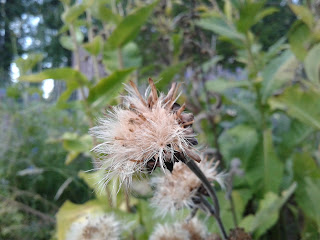National Invasive Species Awareness Week February 26 - March 2
February 26 through March 2 is National Invasive Species Awareness Week.
Did
you know?
Invasive species come in all forms – animal, plant, and
pathogen. The United States spends more than $120 Billion1 in
damages associated with invasive species. Invasive species harm the agricultural
industry, damage healthy Eco-systems, and are a leading factor in freshwater
fish extinctions.2
GET
INFORMED!
Knowledge is the solution! If you don’t know what species are
invasive in your area than stopping the spread of them is impossible! Learn
about the invasive species found in your area from the National Invasive Species Information Center.
STOP THE
SPREAD!
We spread invasive species without even knowing we’re doing so.
Plant parts, seeds, and soil hitch a ride on our shoes, clothes, tire treads,
and boats. Without our knowledge, we spread these invasive species along the
trails, roadways, and waterways. Always, clean hiking boots, camping gear,
off-road vehicle, boats, and trailers. Learn more at PlayCleanGo.org
Do
not use invasive plants in your garden!
Another common way of spreading invasive species is by planting
them in our home gardens. A flower may not be invasive in one part of the
country but can be in another. Because of this, make sure to check the contents
of mixed flower seeds packs for species that are considered invasive in your
area. Also make sure to use certified
“weed free” forage, hay, mulch and soil.
Make
sure you…3
1. Do not dump live bait or aquariums into waterways. Habitattitude.org
2. Do not move firewood – buy it where you burn it! DontMoveFirewood.org
3. Do not transport fresh fruits and vegetables out of your
region / state / or county. Hungry Pests
ACT NOW!
We must be more aware of our actions and how they affect the
Eco-system around us. We need to actively participate in the prevention of the
spread of invasive species. If you want to learn more and participate in an
event near you, browse this LIST OF EVENTS.
References:
1, 2 U.S. Fish and Wildlife Service. 2012. The Cost of Invasive
Species. https://www.fws.gov/verobeach/PythonPDF/CostofInvasivesFactSheet.pdf
3 Center for Invasive Species and Ecosystem Health. n.d. National
Invasive Species Awareness Week. University of Georgia. https://www.nisaw.org/meetings/2018/toolkit/




Comments
Post a Comment